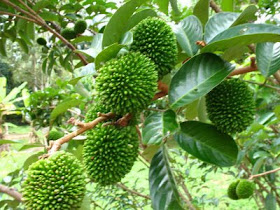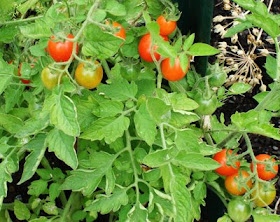




The kaffir lime (Citrus hystrix DC., Rutaceae), also known as kieffer lime, porcupine orange, and limau purut is a type of lime native to Indonesia, Malaysia and Thailand, commonly used in Southeast Asian cuisine, and the increased demand for it in North America is relatively recent. It is widely grown worldwide as a backyard shrub. The kaffir lime is a rough, bumpy green fruit that grows on very thorny bush with aromatic and distinctively shaped "double" leaves. It is well suited to container growing. The tree is not tall and grow about 9-18 ft. The green lime fruit is distinguished by its bumpy exterior and its small size (approx. 4 cm wide).
How to grow
It needs tropic climate, well-drained moist soil. Sow the seed directly into the fertile soil 1/2 inches deep and cover it lightly. Keep the soil moist for germination and temperature must at least 24 degree Celsius. It takes about 7-10 days to germinate. Spacing is 1 meter and 1 meter for rows apart. USDA zone 9-10.
Cooking info
The Kaffir Lime is among the most unusual cultivated citrus. The leaves are used extensively in Asian cooking - particularly in Thai cuisine (Tom-yam soup and curry). The smooth aromatic foliage of the Kaffir Lime is high in volatile oils, which gives it a mysterious and distinctive flavor that cannot be duplicated. The flesh and rind from the green bumpy fruit can also be used in cooking
Medical uses
To alleviate colds, lack of energy and tiredness, the juice extracted from the fruit is mixed with plain water and drank three times a day. The juice is quite sour with a bitter aftertaste!
Kaffir Lime contains tannin, triterpenouid and saponin. It is used in herbal medicines and traditional treatments, as the fruit and especially its leaves, have those special properties to encourage the growth of skin.













































